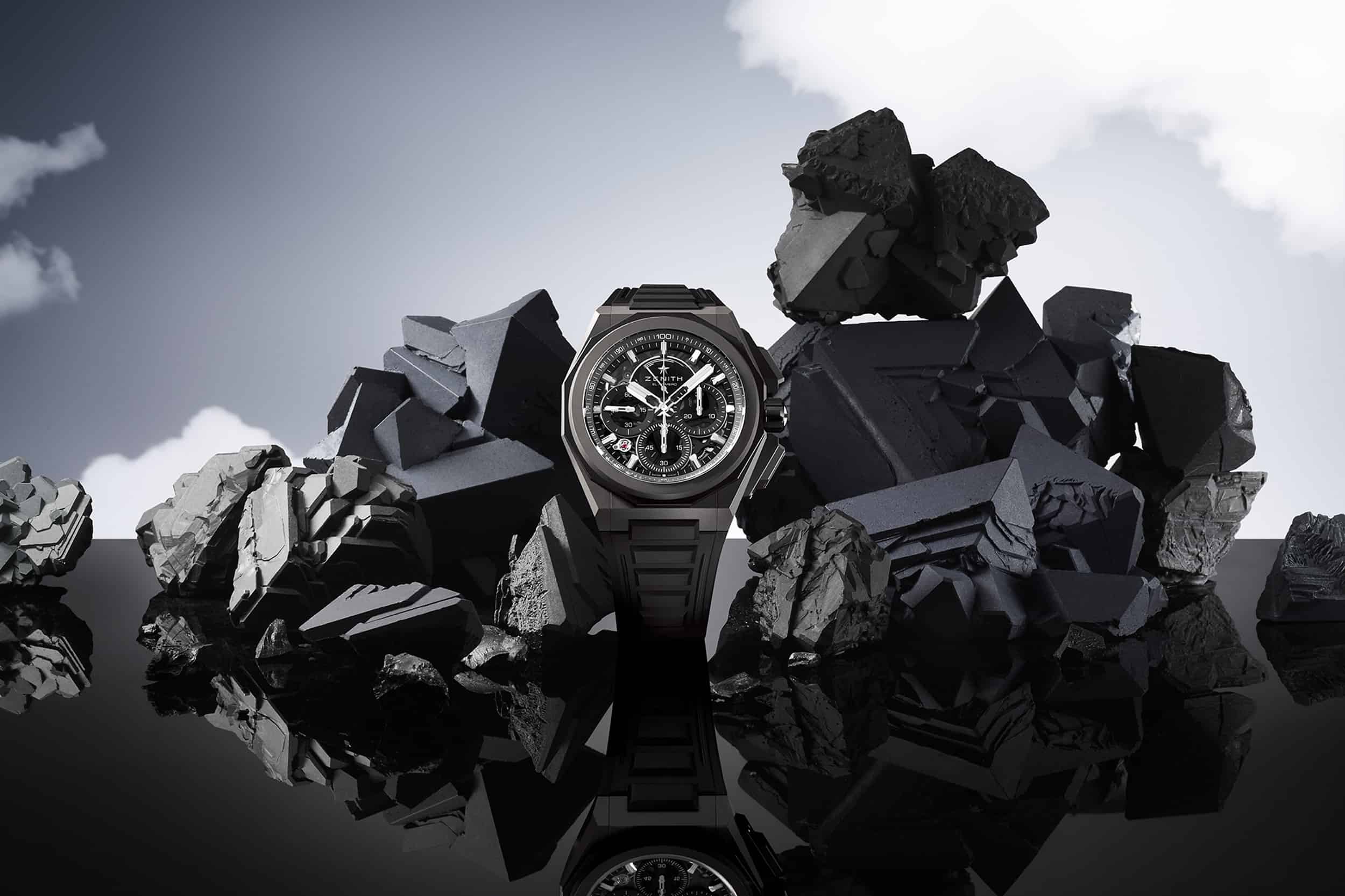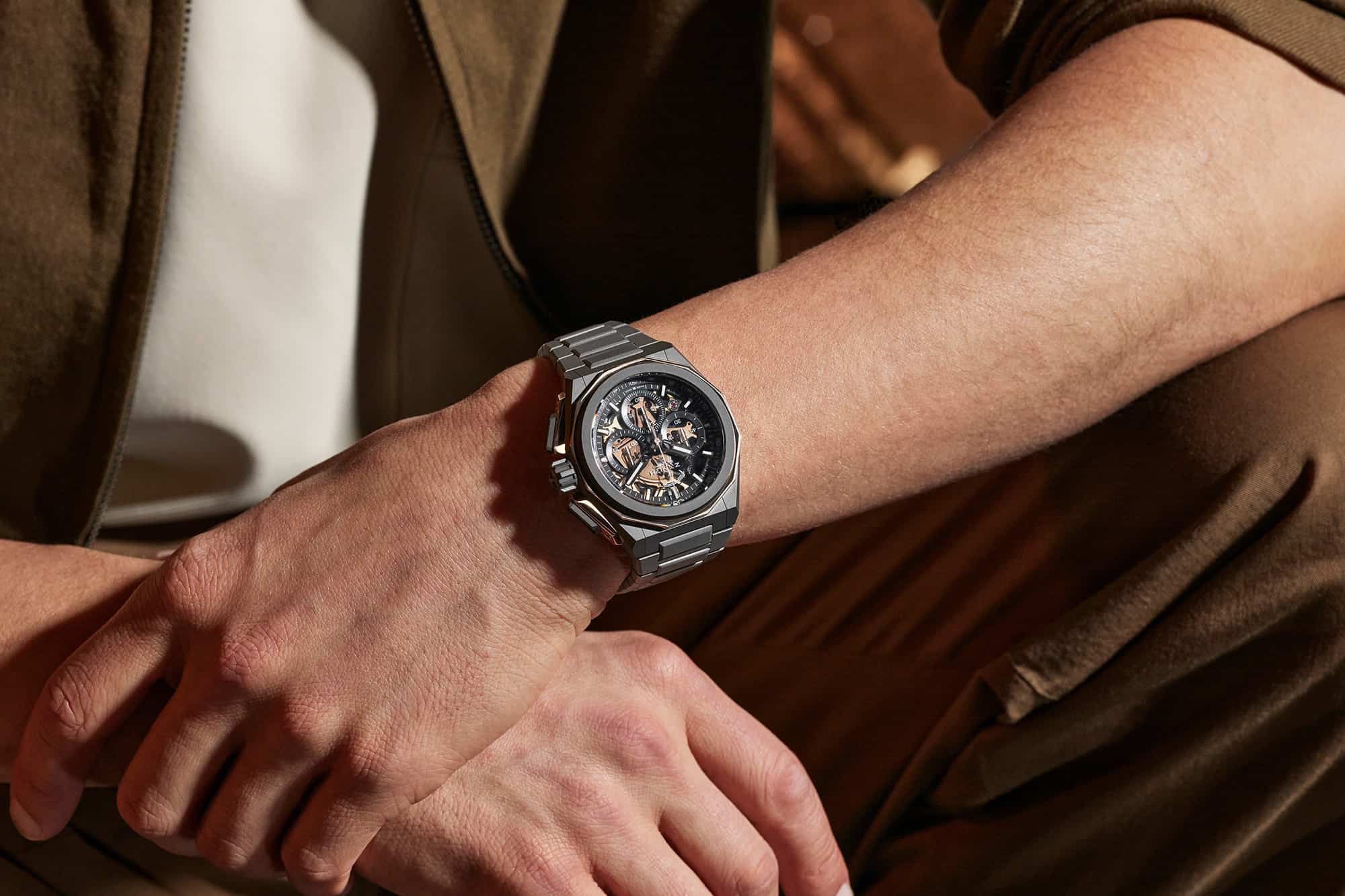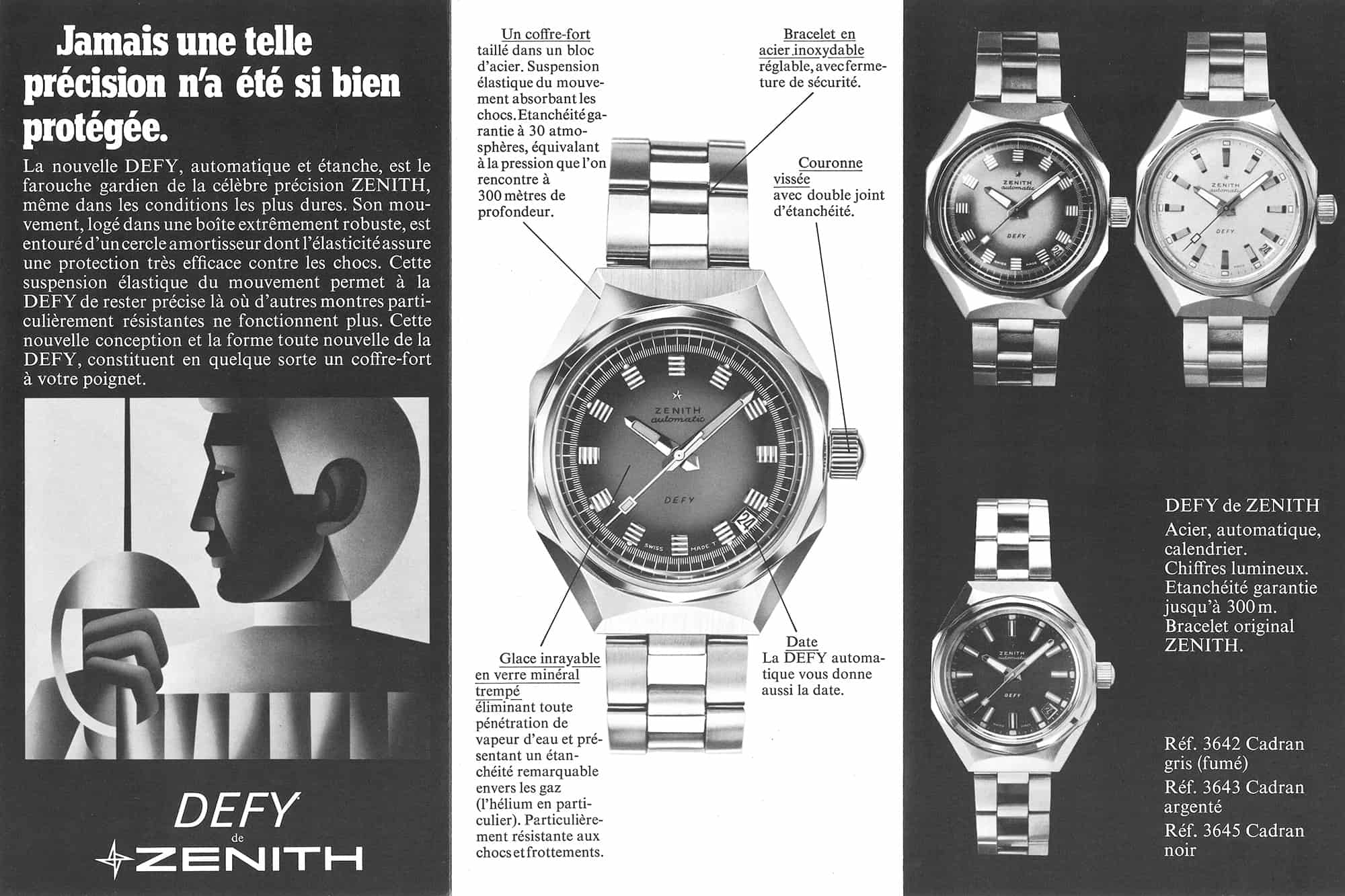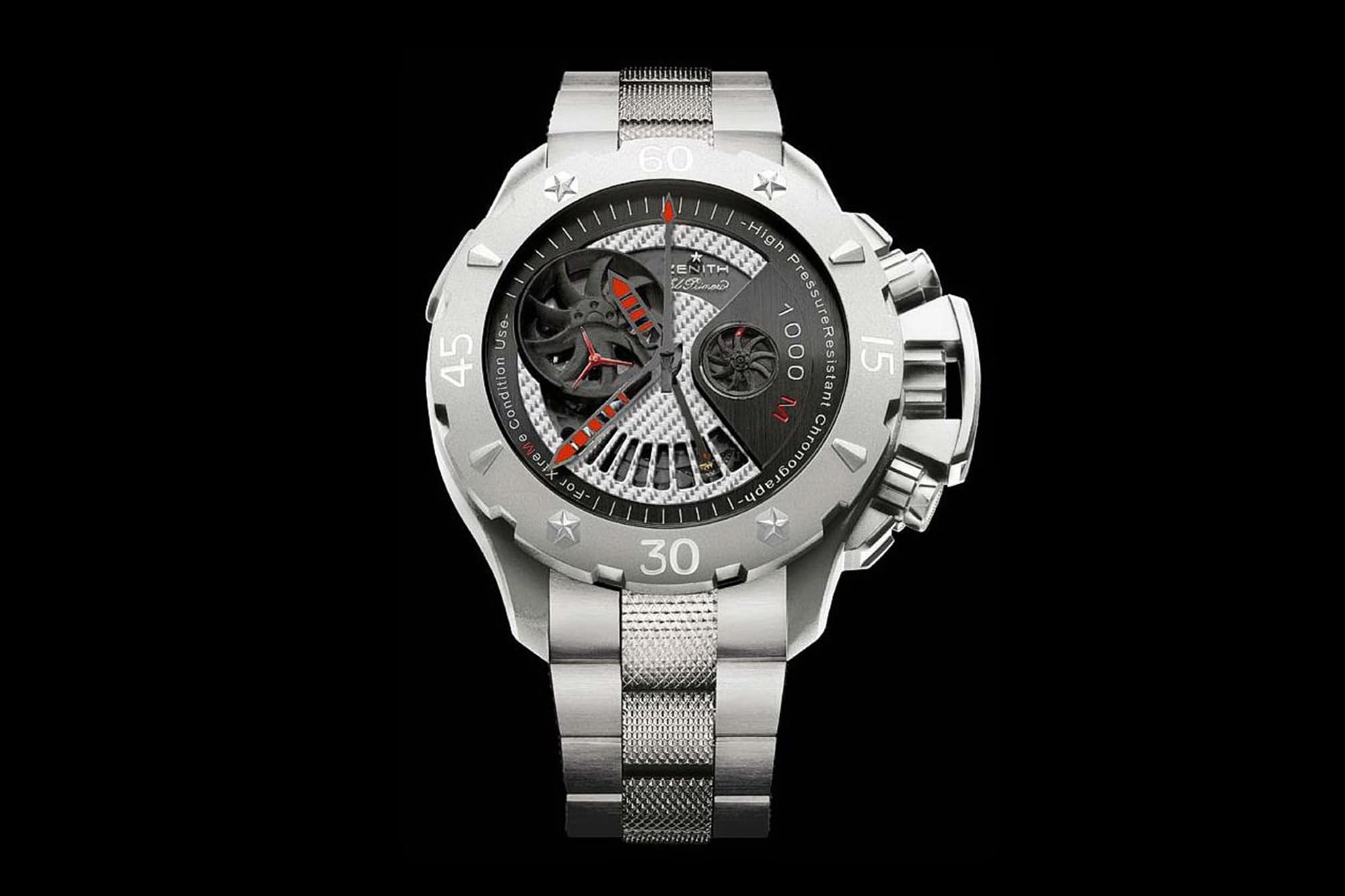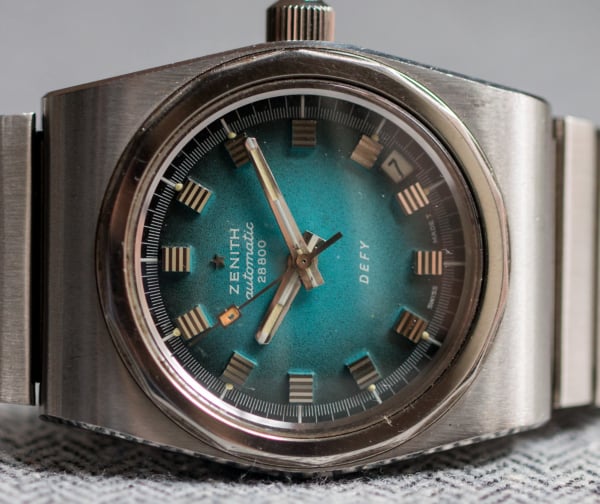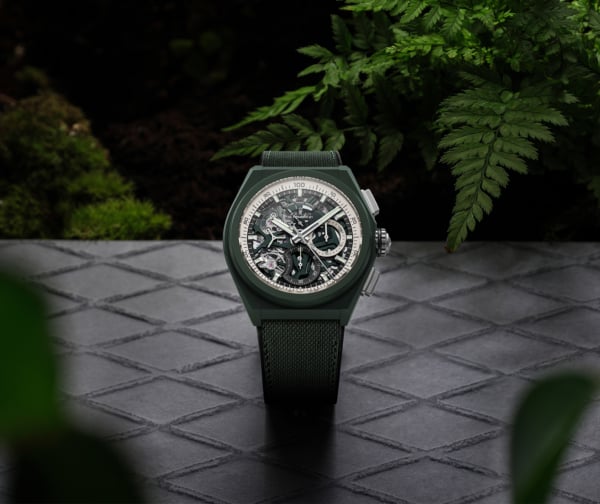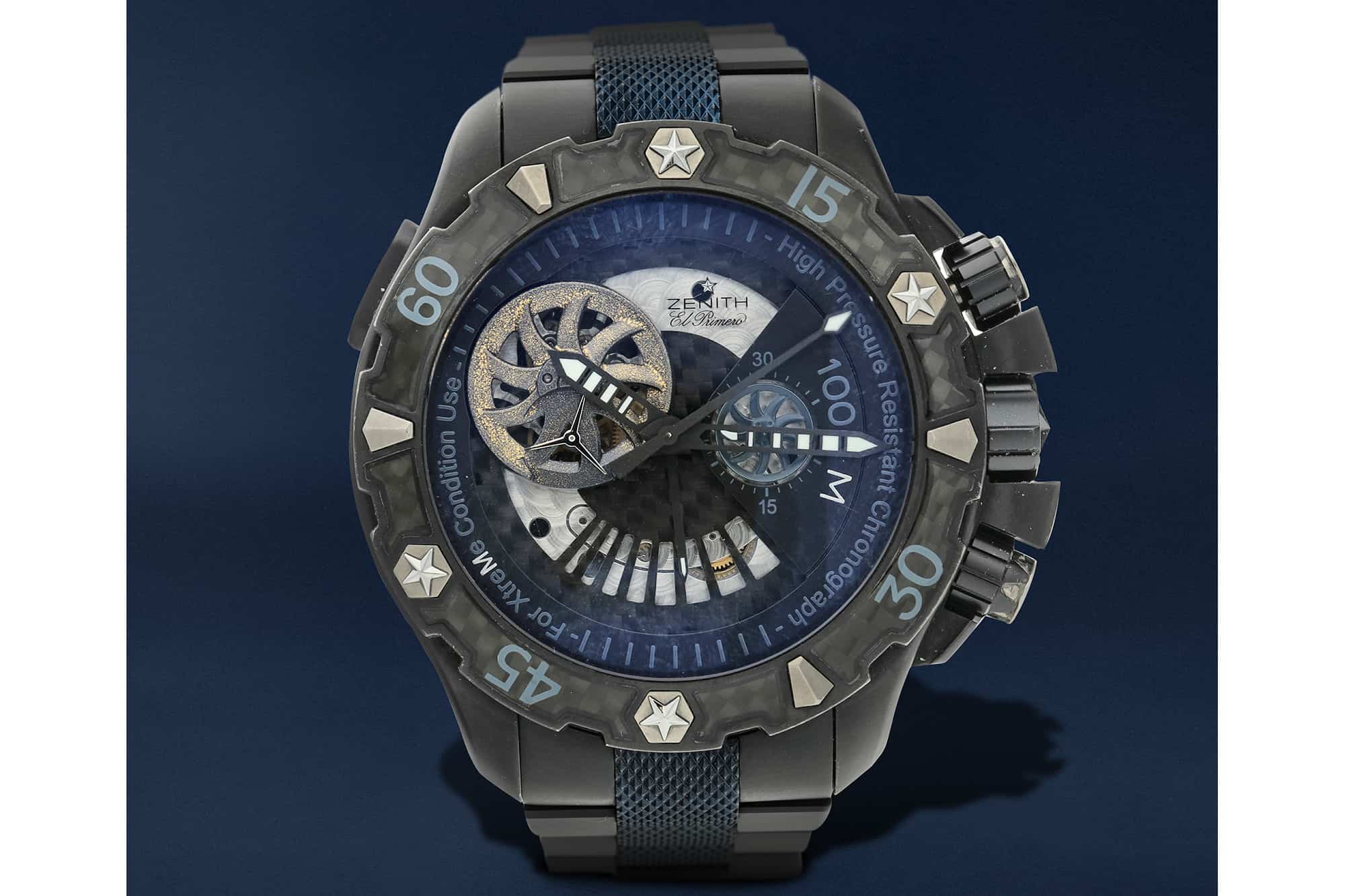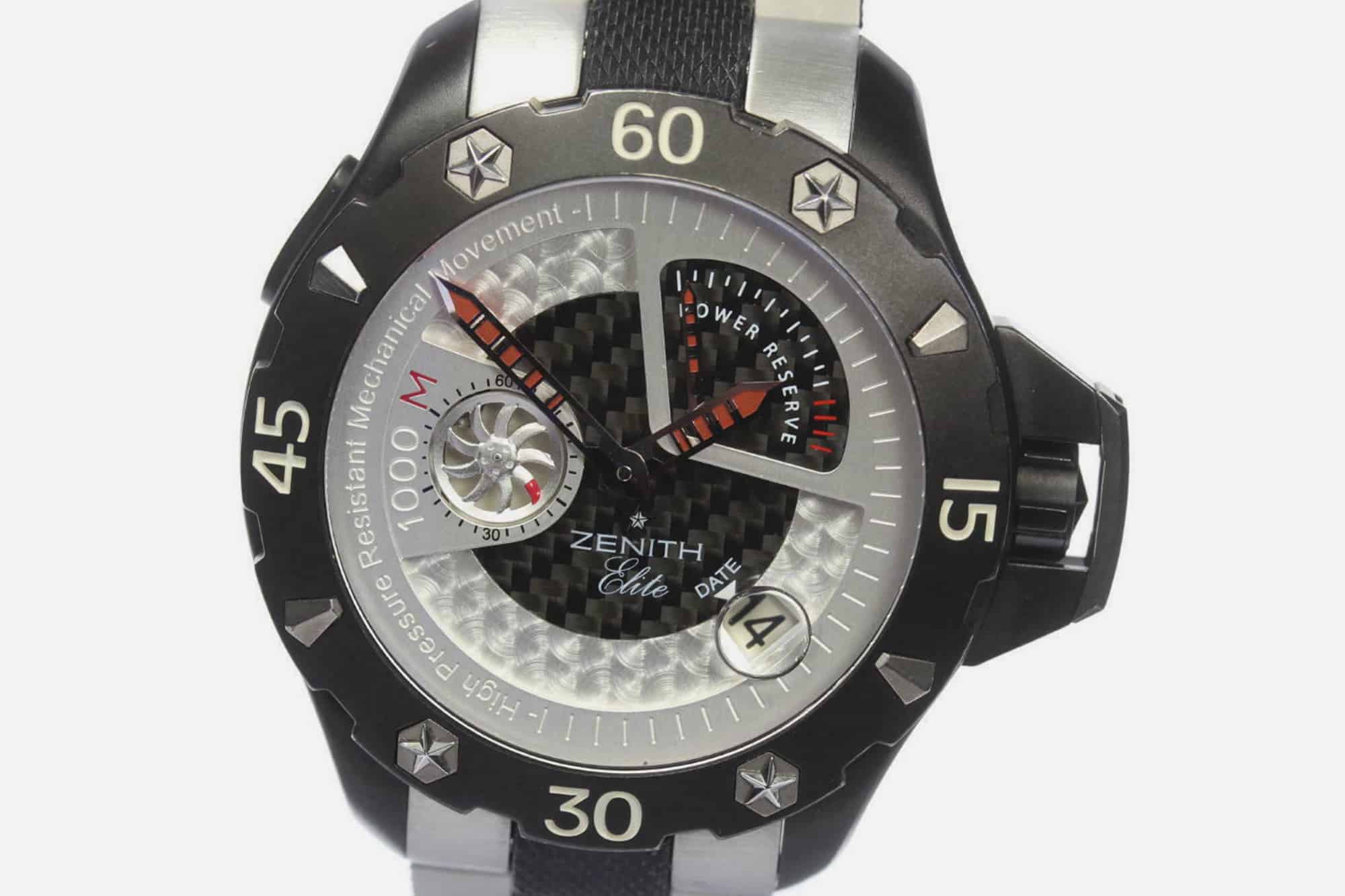We recorded a podcast some months ago all about “Guilty Pleasure” watches, and while I strongly believe that there’s no such thing as a “guilty” pleasure at all, I think there are definitely watches that we become transfixed by against our better judgement. For one reason or another, or maybe a whole host of reasons, these watches seep into our brains, become WatchRecon alerts, and eventually turn into small objects of obsession, even though they’re not practical, cohesive in your collection, or even objectively good looking. I guess this is me coming clean, and admitting to a so-called guilty pleasure that I failed to recognize on that podcast, or perhaps it’s only just surfacing now. Either way, we should talk about the Zenith Defy Xtreme.
Before we get to the Xtreme, a watch that’s long deserved a proper reading, let’s give a quick shout out to the new watch on the block, the Zenith Defy Extreme, unveiled just a few weeks ago at Watches & Wonders. The Extreme, we’ll point out right away, has absolutely nothing to do with the Xtreme. This new El Primero 9004 powered high frequency chronograph shares a name (but not a spelling) with the Xtreme of the 00s, but is an altogether different type of watch with a very different look, and fits more cleanly into Zenith’s modern design language than the Xtreme of old did when it was initially introduced. Put more simply, the new Extreme doesn’t feel like a radical departure from the norm in the way the Xtreme did years ago, and that’s a credit to Zenith for building out the Defy collection in recent years in a deliberate and logical way that’s in tune with the brand’s history.
The Extreme is a big and bold titanium watch with a highly angular 45mm case that draws inspiration from the earliest Defy references. The starting price of the Extreme chronograph sits at $18,000 (and goes up if you want one with gold accents), and it has an over-the-top quality to it, both aesthetically and mechanically, which is a defining historical characteristic of all Defys.









 Featured Videos
Featured Videos




